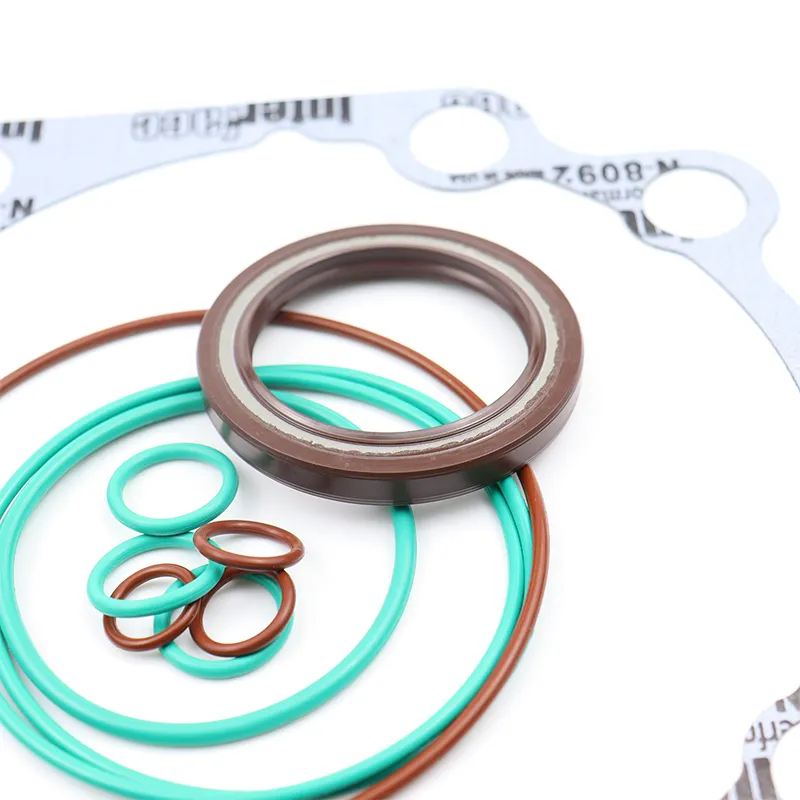Nov . 01, 2024 18:29 Back to list
Effective Solutions for Hydraulic Shaft Seal Applications and Maintenance Techniques
Understanding Hydraulic Shaft Seals Essential Components for Fluid Power Systems
In the realm of hydraulic systems, efficiency and reliability are paramount. One crucial component that ensures these attributes is the hydraulic shaft seal. These seals play a pivotal role in preventing fluid leakage, maintaining pressure, and protecting essential system components from contaminants.
What is a Hydraulic Shaft Seal?
A hydraulic shaft seal, also known as a rotary seal or oil seal, is designed to close off the gap between a rotating shaft and a stationary housing. This seals the hydraulic fluid within the system, allowing the equipment to function optimally. These seals are typically made from durable materials such as rubber, polyurethane, or PTFE, each chosen based on the specific application requirements, including temperature, pressure, and fluid compatibility.
Importance of Hydraulic Shaft Seals
1. Preventing Leakage Leakage of hydraulic fluids not only reduces system efficiency but also poses environmental hazards. Hydraulic shaft seals are engineered to minimize fluid loss, ensuring that the system maintains its pressure and operates effectively.
2. Contaminant Protection In harsh operating environments, foreign particles can enter hydraulic systems, potentially causing damage to internal components. Hydraulic shaft seals act as a barrier, preventing dust, dirt, and other contaminants from infiltrating the system. This protection extends the lifespan of hydraulic equipment and reduces maintenance costs.
3. Pressure Maintenance Maintaining pressure is crucial for the effective operation of hydraulic systems. A faulty or worn-out seal can lead to pressure drops, impacting performance. Hydraulic shaft seals are designed to withstand high pressure, ensuring that the system operates within its intended parameters.
Types of Hydraulic Shaft Seals
There are several types of hydraulic shaft seals, each designed for specific applications
hydraulic shaft seal

- Lip Seals One of the most common types, lip seals use a flexible lip to create a tight seal against the shaft. They are ideal for low to moderate pressure applications.
- Hybrid Seals Combining the features of lip seals and other sealing technologies, hybrid seals provide enhanced performance in demanding conditions.
- Mechanical Seals These seals feature a more complex design utilizing multiple components to achieve superior sealing under high pressures and temperatures.
Choosing the Right Seal
Selecting the appropriate hydraulic shaft seal involves considering various factors, including
- Fluid Type The compatibility of the seal material with the hydraulic fluid is essential to prevent degradation.
- Operating Conditions Temperature, pressure, and environmental conditions must be taken into account to ensure optimal performance.
- Shaft Speed The speed of the rotating shaft can influence the type of seal used, as some seals are better suited for high-speed applications.
Conclusion
Hydraulic shaft seals are essential components that significantly impact the efficiency and reliability of hydraulic systems. By preventing leaks, protecting against contaminants, and maintaining pressure, these seals ensure that equipment operates smoothly and effectively. When choosing a hydraulic shaft seal, it is vital to consider the specific requirements of the application to ensure optimal performance and longevity. Understanding these components and their functions can lead to better maintenance practices and enhanced performance of hydraulic systems across various industries.
-
The Trans-formative Journey of Wheel Hub Oil Seals
NewsJun.06,2025
-
Graphene-Enhanced Oil Seals: Revolutionizing High-Pressure Oil Sealing
NewsJun.06,2025
-
Future of Hydraulic Sealing: Advanced Intelligent TCN Oil Seals
NewsJun.06,2025
-
Don’t Let a Broken TCV Oil Seal Ruin Your Day
NewsJun.06,2025
-
Bio-Inspired Dust Seals for Better Sealing Performance
NewsJun.06,2025
-
Biodegradable and Sustainable Hydraulic Seal Materials
NewsJun.06,2025
-
Top Oil Seal Solutions for Your Industrial Needs
NewsMay.22,2025
Products categories
















